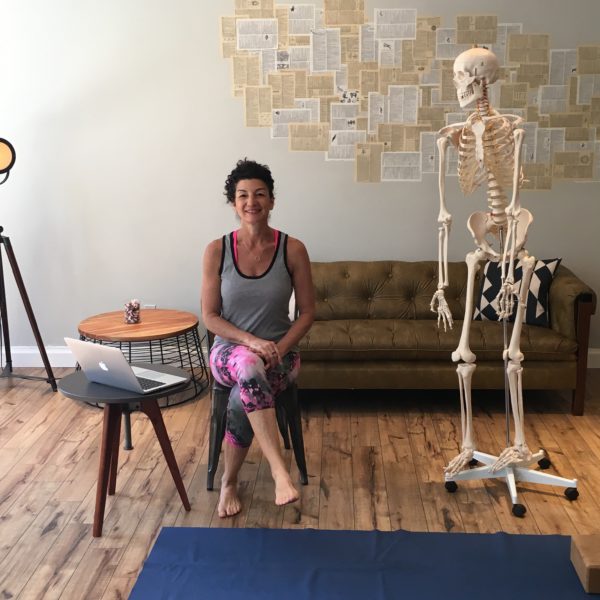
I’ve been blogging about my free online training called the LEARN YOGA Challenge and today I’m going to share a quick blog post that supports the bonus video I just posted. The video covers the technique of foam rolling and ball rolling and what happens when you use these tools.
I’ll link first to the video here.Â
In the video, I share some visuals that walk you through the impact of foam rolling on muscles. Here are the slides that I share:
- Mechanoreceptors: Specialized sensory receptors that respond to deformation of body tissues
- Muscle spindles: Small mechanoreceptors found in the belly of skeletal muscle that measure the amount and rate of stretch
- When the muscle is lengthened too much or too quickly, the muscle spindle sends impulses to the Central Nervous System resulting in a contraction as a protective response
- Golgi tendon organs are located at the muscle/tendon junction. They measure the amount and rate of tension that develops within the muscle
- If the tension is too much/too quick, the GTO will cause the muscle to relax
- During stretching, the protective relaxation occurs after the muscle spindle causes the contraction. After 30 seconds or so of contraction, the relaxation of the muscle occurs
- At that point, the joint can be taken further into its’ range of motion. This is known as autogenic inhibition
- Self Myofascial Release or SMR: uses this CNS response to release knots in muscle
- By applying gentle force to adhesions in the muscle, the fibers of muscle are straightened out instead of bunched up in knots
- The relaxation response used in SMR or foam or ball rolling, is through autogenic inhibition
- Apply pressure via rolling. When you find a tight spot, stay still on that spot for at least 30 seconds. Do not roll fast! Look for those tight spots and apply pressure.
(Source: NASM Study Journal, 2017)
Please note the suggestion above to roll slowly! I can’t tell you how many times I see people at the gym rolling quickly. It’s clear to me that many people don’t really understand what we’re trying to do in using these tools so hopefully this clears it up.
One additional note: As you know, it’s not very common to use foam rollers in yoga class. However, the concept of using the CNS response to increased tension in muscle to create safe increases in range of motion is most definitely what happens in static stretching. When we think about muscles working in pairs, so let’s look at the hamstrings which bend the knee and the quadriceps which extend the leg, we can call these muscles a pair that do opposite things. The hamstrings bend the knee while the quads extend it. When we stretch the hamstrings, the GTO’s will sense that stretch is happening and will trigger the contraction of the quadriceps to protect the hamstrings from tearing at their origin of the sitting bones. So, with a slight bend of the knees, you can decrease the GTO response and over time (a few seconds) go back to straightening the legs a bit more.
This CNS response is outlined beautifully by Dr. Ray Long in his blog here.Â
So, with this bonus video, that concludes the LEARN YOGA Challenge. If you missed any of the videos and the instruction guide, get that here.
Next up this month: The LEARN ANATOMY Challenge! If you’re a yoga teacher, looking for practical ways to apply anatomy to teaching, you’re going to love this one.
Please add your comments below!
Thanks for reading.Â
